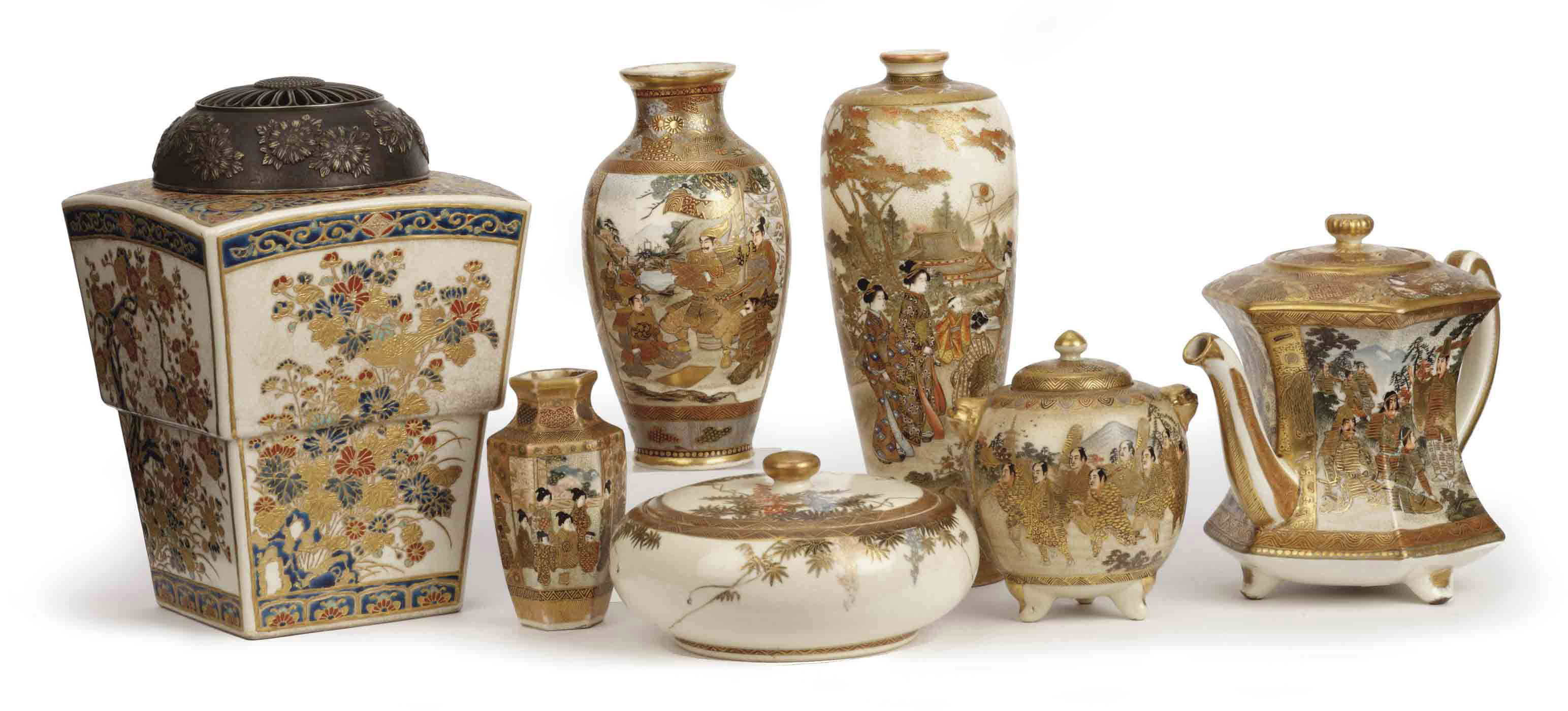Satsuma ware is a type of Japanese pottery that originated in the Satsuma region of Kyushu in the 16th century. It is characterized by its bold colours, intricate designs, and high quality.
The first kilns in Satsuma were established by Korean potters who were kidnapped by the Japanese for their extraordinary skills. Prior to this, there was no real ceramic industry to speak of in the Satsuma region.
There are two distinct types of Satsuma ware: Ko-Satsuma and Kyō-Satsuma. Ko-Satsuma is characterized by a heavy dark glaze, often plain, but occasionally with an inscribed or relief pattern. This style is rarely seen outside museums and it proliferated up until about 1800. Kyō-Satsuma, which became popular from around 1800, is famed for its delicate ivory coloured ground with finely crackled transparent glaze. It is markedly different to Ko-Satsuma. These early designs focused on over-glaze decoration of simple, light, floral patterns with painted gilding. Colours often used were iron red, purple, blue, turquoise, black and yellow.
The first presentation of Japanese Arts to the West was in 1867 and Satsuma ware was one of the star attractions. This helped to establish the aesthetic we are most familiar with today. This export style reflects the international tastes of the time. Popular designs featured mille-fleur (a thousand flowers), and complex patterns. Many pieces featured panels depicting typical Japanese scenes to appeal to the West such as pagodas, cherry blossom, birds and flowers and beautiful ladies and noblemen in traditional dress.
The height of popularity for Satsuma ware was the early Meiji period, from around 1885. The market became saturated with cheaper mass-produced work lacking the quality of the earlier pieces. By the 1890's Satsuma ware had lost favour with the critics, but remained popular with the general public. It became synonymous with Japanese ceramics and was still being produced by some factories as late as the 1980's. Satsuma ware is a beautiful and versatile type of pottery that has been enjoyed by people all over the world for centuries. It is a true reflection of Japanese culture and craftsmanship.
